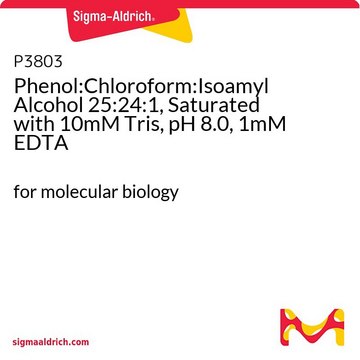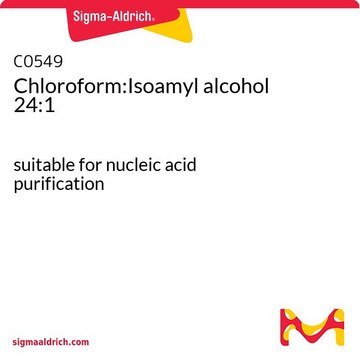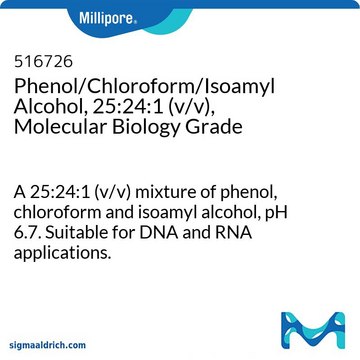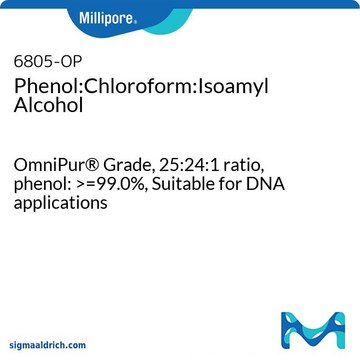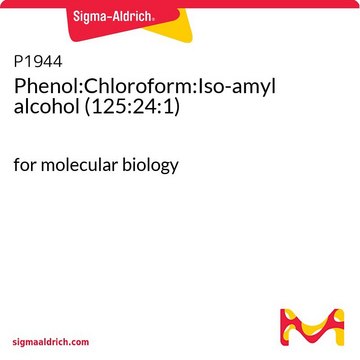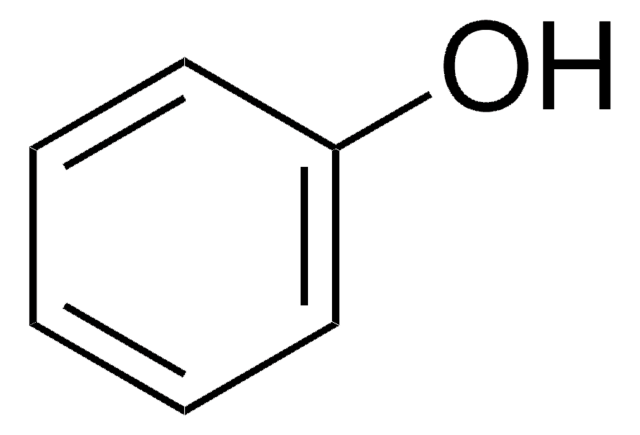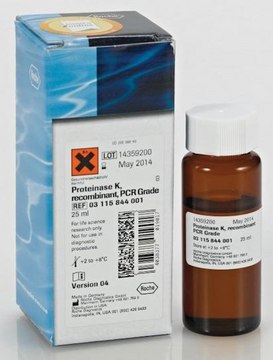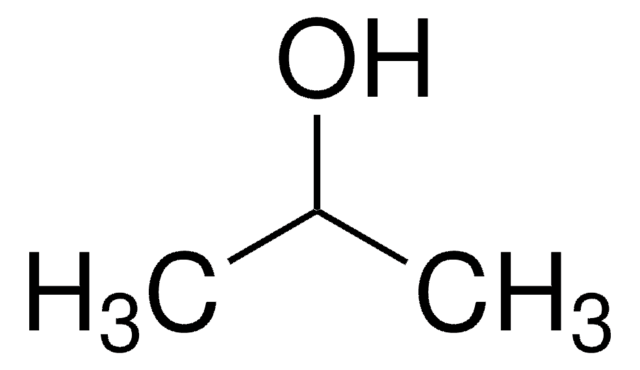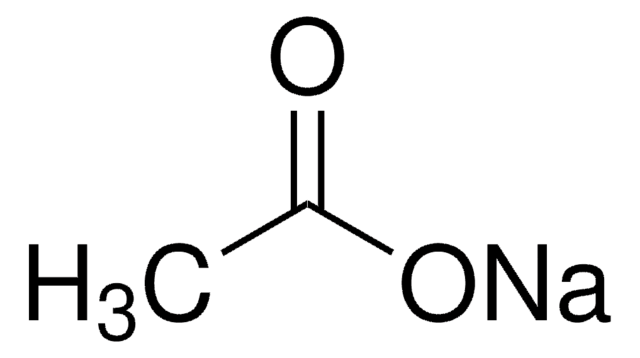P2069
Phenol:Chloroform:Isoamyl Alcohol 25:24:1 Saturated with 10 mM Tris, pH 8.0, 1 mM EDTA
Supplied with Equilibration buffer, Molecular Biology
Synonym(s):
DNA extraction
Select a Size
Select a Size
About This Item
Recommended Products
grade
Molecular Biology
Quality Level
Assay
≥99.0%
form
liquid
pH
6.5-6.9(pH of phenolic phase)
7.8-8.2(pH of phenolic phase after the addition of Equilibration Buffer)
application(s)
agriculture
storage temp.
2-8°C
Application
Packaging
Suitability
Preparation Note
Other Notes
related product
Signal Word
Danger
Hazard Statements
Precautionary Statements
Hazard Classifications
Acute Tox. 3 Oral - Acute Tox. 4 Dermal - Acute Tox. 4 Inhalation - Aquatic Chronic 2 - Carc. 2 - Eye Dam. 1 - Muta. 2 - Repr. 2 - Skin Corr. 1B - STOT RE 1 Oral - STOT RE 2 - STOT SE 3
Target Organs
Central nervous system, Liver,Kidney, Nervous system,Kidney,Liver,Skin
Storage Class Code
6.1A - Combustible acute toxic Cat. 1 and 2 / very toxic hazardous materials
WGK
WGK 3
Flash Point(F)
Not applicable
Flash Point(C)
Not applicable
Regulatory Information
Choose from one of the most recent versions:
Already Own This Product?
Find documentation for the products that you have recently purchased in the Document Library.
Which document(s) contains shelf-life or expiration date information for a given product?
If available for a given product, the recommended re-test date or the expiration date can be found on the Certificate of Analysis.
How do I get lot-specific information or a Certificate of Analysis?
The lot specific COA document can be found by entering the lot number above under the "Documents" section.
There are two layers in the bottle of Product P2069, Phenol:Chloroform:Isoamyl Alcohol 25:24:1; which layer should I use?
The lower phase is the phase that is to be used.
There is an Equilibration Buffer (Product B5658) that is included with Product P2069, Phenol:Chloroform:Isoamyl Alcohol 25:24:1. Is B5658 also available separately?
No, it is only available as part of P2069.
I ordered Product P2069, Phenol:Chloroform:Isoamyl Alcohol 25:24:1; I got one bottle of the Phenol:Chloroform:Isoamyl Alcohol and one bottle of B5658, Equilibration buffer. When and how am I supposed to use the B5658?
B5658 is a Tris buffer that is used to raise the pH of the phenol:chloroform:isoamyl alcohol mixture, to make it suitable for isolation of genomic DNA. The contents of the two bottles need to be well mixed. Then allow the mixture to separate; this may take 2-4 hours. This procedure should raise the pH of the phenol phase from 6.7 to about 8.0. Only one "treatment" is needed. This solution should be stable for up to 12 months.
How do I find price and availability?
There are several ways to find pricing and availability for our products. Once you log onto our website, you will find the price and availability displayed on the product detail page. You can contact any of our Customer Sales and Service offices to receive a quote. USA customers: 1-800-325-3010 or view local office numbers.
What is the Department of Transportation shipping information for this product?
Transportation information can be found in Section 14 of the product's (M)SDS.To access the shipping information for this material, use the link on the product detail page for the product.
I see that you list two equilibrated Phenol:Chloroform:Isoamyl alcohol products. When should I use Product P3803, and when should I use Product P2069?
In short, P3803 is for RNA work, and P2069 is for DNA work. Product P2069 consists of one bottle of Product P3803 and one bottle of Product B5658. The B5658 is added to the P3803 to raise the pH of the organic phase from 6.7 to 8.0; pH 8.0 is not suitable for RNA work, because RNA can degrade at the higher pH.
My question is not addressed here, how can I contact Technical Service for assistance?
Ask a Scientist here.
Protocols
Method for reverse transcription of RNA into DNA. Uses a premixed reagent that contains reverse transcriptase, dNTPs, primers, RNase inhibitor and buffer. Fast generation of cDNA.
Our team of scientists has experience in all areas of research including Life Science, Material Science, Chemical Synthesis, Chromatography, Analytical and many others.
Contact Technical Service